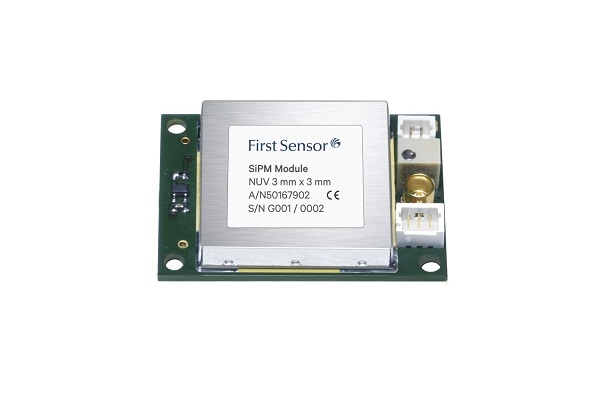First Sensor presents a new development module for its silicon photomultipliers (SiPMs) for the detection of ultra-low light levels in the wavelength range from 350 nm to 900 nm. The module integrates a stable voltage supply, signal amplification, interfaces and the SiPM detector in a compact plug and play unit.

Included software allows optimization of the operating point of the detector to the respective application by the precise and individual setting and storage of the supply voltage. The new SiPM module is ideally suited for photon counting applications. For the measurement of ionizing radiation, the silicon photomultiplier can optionally be equipped with a LYSO scintillation crystal whose luminescence radiation is in the visible range at around 420 nm.
The solid-state silicon photomultipliers from First Sensor offer significant advantages such as low operating voltage, excellent temperature stability, immunity to magnetic fields and a very small size. The NUV- and RGB-SiPMs with peak sensitivities at 420 nm and 550 nm feature extremely low temperature coefficients of the breakdown voltage and gain, which allows for highly accurate and stable measurements. Enhanced materials and latest semiconductor technology enables low-noise devices with reduced dark count rate, crosstalk and very low afterpulsing probability. The precision SiPM detectors are designed to achieve very high gain (>106) and high photon detection efficiencies. Further, First Sensor develops and manufactures custom specific modules and complete systems for OEM customers worldwide.
Important features of the SiPM module:
- detection of ultra-low light levels and single photons from 350 to 900 nm
- compact plug and play unit with voltage supply, signal amplification etc.
- software for working point adjustment and storage
- SiPM option with LYSO scintillation crystal for ionizing radiation detection
Typical applications of the silicon photomultiplier module from First Sensor include test runs and qualifications in high energy physics, medical diagnostics, nuclear medicine, homeland security and analytical instruments.
Further product information can be found here.